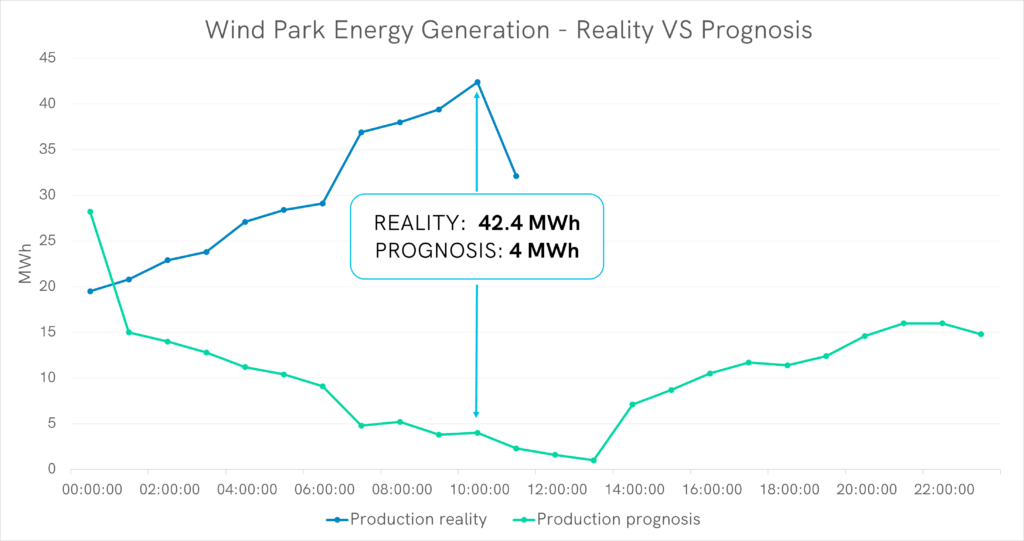Wind energy is a significant source of renewable energy that has the potential to meet a substantial portion of our global energy demand. The International Energy Agency predicts that wind power could generate up to 18% of the world’s electricity by 2025, and up to 35% by 2040.
However, wind energy’s intermittent nature is one of its most significant challenges. Wind speeds are unpredictable and can vary significantly over short periods, making it challenging to balance the supply and demand of electricity on the grid.
To illustrate this, let’s take a recent example from March 30th, as presented by the Estonian national grid operator – Elering.
Predicting wind generation
Wind park operators are required to submit hourly-based forecasts of their electricity production for the following day to the grid operator. They utilize various prediction methods, such as weather forecasting models specifically designed for wind energy production. These models consider factors like wind speed, its direction, and other weather elements that can affect turbine performance. By combining these forecasts with historical data from the wind park, operators can identify wind speed patterns to make more accurate predictions.
However, the reality is that predictions don’t always match actual outcomes, as shown in the graph below, where discrepancies can be over 10 times.

- Energy generation prediction versus reality in wind parks
The outcome
Grid operators face challenges due to the variability of wind power, as they must balance electricity supply and demand in real-time. When wind speeds are low, wind turbines generate less electricity, and operators have to depend on other energy sources, such as natural gas or coal-fired power plants, to compensate. On the other hand, high wind speeds can result in excess electricity generation that may not be immediately required on the grid. If not managed properly, this can lead to grid instability, blackouts, or brownouts.
The graph below illustrates the balancing reality that operators face on days with varying wind speeds. Whenever the orange line moves away from the 50 Hz mark, operators must take corrective measures to restore balance.

2. Grid frequency instability within a day (30.03)
Solution – smart software
To address this challenge, wind parks need to incorporate a demand response program such as Fusebox. It is a strategy that allows electricity consumers to adjust their energy consumption in response to changes in the electricity market. This means that when wind speeds are low, and wind parks are not generating enough electricity, Fusebox’s smart software can help to reduce the overall demand on the grid. When wind speeds are high, and wind parks are generating more electricity than the grid can absorb, then we can help to increase demand and ensure that the excess energy is not wasted.
Fusebox’s software provides economic benefits to both wind park operators and consumers. By participating in demand response, consumers can reduce their energy costs and even earn money by allowing their energy consumption to be adjusted during peak times. For wind park operators, demand response can help to increase revenue by providing an additional source of income.
Conclusion
Demand response is crucial for the success of wind parks as a source of renewable energy. By stabilizing the grid and providing economic benefits, demand response can help to ensure that wind energy plays a major role in meeting our energy needs while reducing our dependence on fossil fuels.

